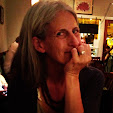1. How might a Public Library institute use flickr to promote their summer reading program?
Flickr.com could be very useful to a public library's summer reading program in allowing members of the reading program pictures of recommended book covers for quick identification. Photos of the incentives or prizes, the librarians, the previous year's activities might also be included. Shots of the interior of the library could also be helpful for those who have never visited the library before. Knowing what a place looks like before actually visiting makes the location more familiar and less scary. This may help increase attendance. Posting pictures of SRP activities would be interesting, inviting and helpful, but privacy issues need to be carefully assessed before posting photos of library patrons, especially children. Libraries may find that a server like youtube.com is better suited to promoting the summer reading program. Watch this four-minute video from the Denver Public Library to see what their librarians did with this video technology.
2. What are some ways that an Academic and a School library might use Flickr?
The college and university libraries with accounts on flickr.com seem to use their accounts to familiarize viewers with the library facilities. This could be beneficial for new students. Exterior shots would help them recognize the building when they arrive on campus. Interior shots would help them be familiar with the facility, and they would be able to regocnize a space within the building visually or look for a sign they had seen among the photos. For instance, if a student needs to speak with a reference librarian and knows that the reference desk is blue from a flickr photo, the desk might be easily located on the student's first visit by just looking for a big blue desk. Special exhibits and events could be posted so that viewers could see if they wanted to make a trip to the campus to see an art exhibit, or people who missed an event could enjoy photos of the event.
The same issue of familiarizing the surroundings before the first visit might be useful for school libraries. Photos of the librarian would be especially helpful so that the new student doesn't think that the librarian will be from the Black Lagoon! Photos of new items or exhibits might be fun for students to view over the weekend to help them decide what they may want to borrow on their next classroom visit.
3. How might an organization use flickr's ability to tag photos? What are the pluses and negatives of the tags?
The tags are very useful for students doing research on subjects such as architecture. I can look up the tag "architecture" or even a more specific one such as "Frank Lloyd Wright," and view photos of famous and not-so-famous buildings as well as some uncopyrighted photos.
The advantage of the ability to tag is that connections may be made that may not be made with authority-based subject categorization. But exactly that same aspect can be a disadvantage. Because any word can be used as a tag, the number of tags is overwhelming and complicated. Words often have more than one meaning, making a tag's meaning equivocal. In other cases, although the word has only one meaning, its meaning is reframed with each user. The tag "me," for example, is almost useless because it occurs on so many people's photostreams and indicates a different person on each user's account.
07 February 2009
Subscribe to:
Post Comments (Atom)


No comments:
Post a Comment